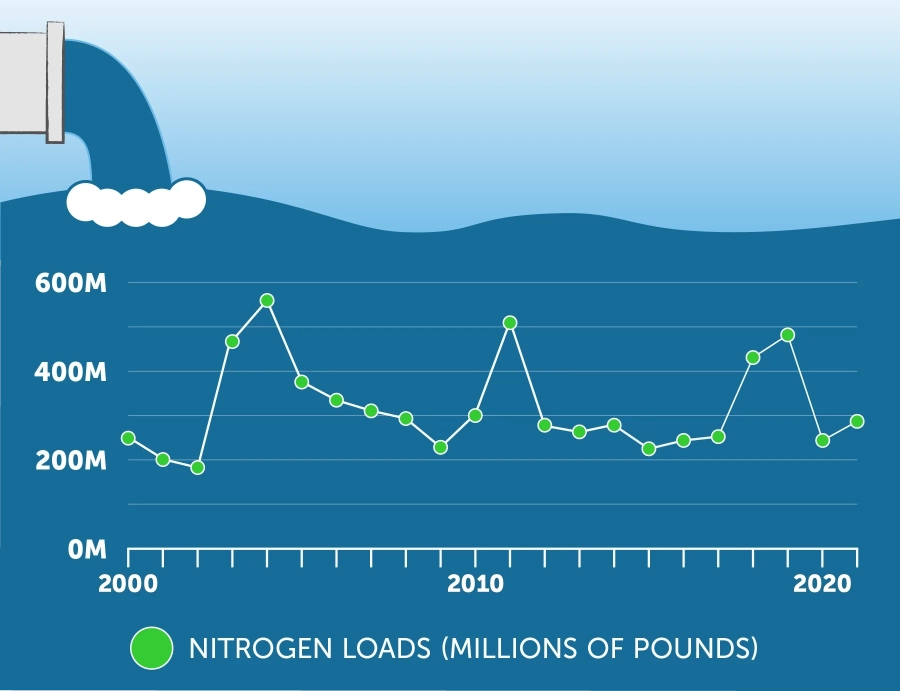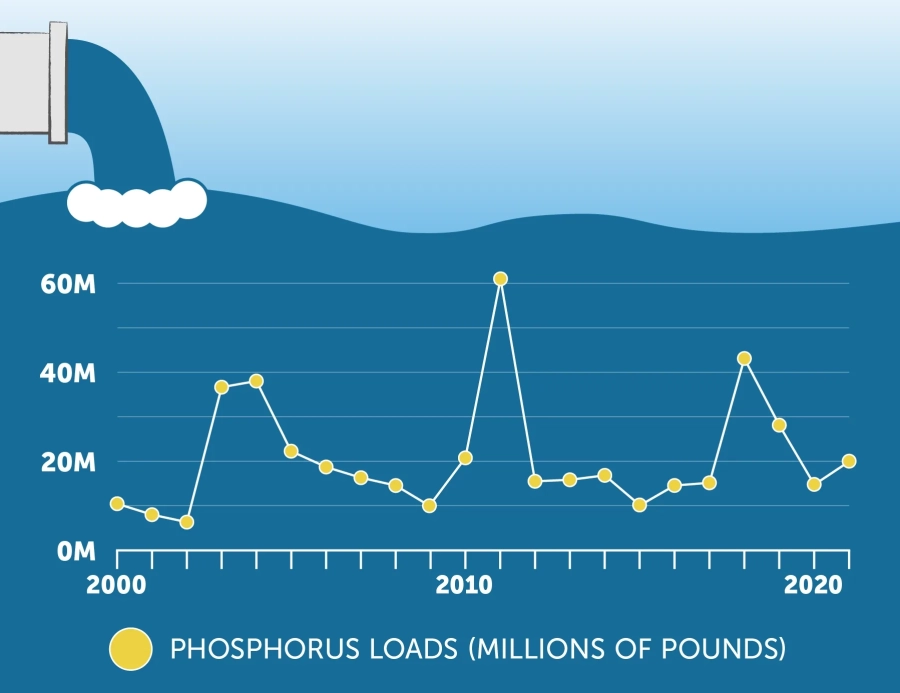Nutrient Runoff
Plants and animals need nutrients to survive. But when too many nutrients enter waterways, they fuel the growth of algae blooms and create conditions that are harmful to underwater life.

Show image description
The line graph shows the span of time from 2000 to 2021 and nitrogen loads from 0 to 600 million pounds. It begins between 200 million and 300 million pounds in 2000, drops to its lowest below 200 million in 2002, then quickly rises to a peak well above 500 million in 2004. From there, it decreases to a low point in 2009, just above 200 million, before increasing to just above 500 million in 2011. In the next year it drops to just below 300 million and stays between 200 and 300 million until 2018, when it rises to above 400 million and then nearly 500 million in 2019. In 2020 it drops back to between 200 and 300 million, with an increase closer to 300 million at the end of the chart in 2021.

Show image description
The line graph shows the span of time from 2000 to 2021 and phosphorus loads from 0 to 60 million pounds. It begins in 2000 just above 10 million pounds and drops slightly in 2001 and 2002 before surging up to over 35 million in 2003 and almost 40 million in 2004. It then drops to just over 20 million and continues dropping to 10 million in 2009 before increasing again, to a huge peak of over 60 million in 2011. It then drops to around 15 million in 2012 and stays relatively stable until dipping 10 million in 2015, then returning to around 15 million. It jumps again in 2018 to over 40 million, then drops steadily to return to around 15 million in 2020. In 2021, the last year shown, there is an increase to 20 million.
